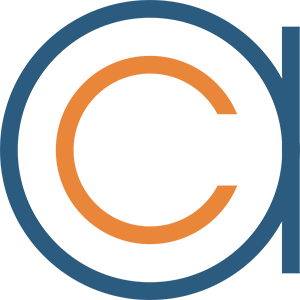The same dreary interview questions have been popular in Britain for many years now – but things are changing. “Why do you want to work for us?” is fast becoming “how many balls do you think will be used in the Rugby World Cup”, or “describe the colour yellow to someone who’s blind”.
But what do these questions really tell us about a candidate – and could they actually be dangerous? We spoke to an Organisational Psychologist to find out.
We’ve all seen the articles recently describing the ‘most unconventional’ or ‘most difficult’ interview questions of the year. It seems like the big guns in Silicon Valley must be employing people just to come up with new ways to interrogate and test their candidates. Perhaps they see some merit in asking candidates things like “if you were an animal, what kind of animal would you be?”, but is there any benefit in this line of questioning for those of us outside San Francisco, or would we be best served by steering clear?
“Perhaps the biggest problem is that poor interview question design can leave your organisation open to legal challenge.”
The potentially dangerous bandwagon of the trendy interview question
It’s an old and unfortunate pattern. Someone somewhere does something game-changing and it gets mileage in the media. The media give it a name – which becomes a buzzword. Then the next week, everyone and their dog is at it – usually producing nothing more than a cheap facsimile of that other person’s great idea. It seems that people in business are just as vulnerable to fads and trends as kids on a primary school playground afterall. Now where did we put those Loom Bands?
There’s a bigger danger to all of this than the fact that you might end up looking a bit stupid though. We spoke to Chartered Psychologist Joanna Cook, who warns that it is wise to err on the side of caution when it comes to interview questions. There are a number of reasons for this explains Joanna (including the fact that candidates can feel turned-off by a company if they don’t feel that the line of questioning is appropriate), but perhaps the biggest problem is that poor interview question design can in the worst cases leave your organisation open to legal challenge.
“Interviewing tends to be most successful when questions are open – based and structured around key attributes that would be required of the candidate in the role they are being considered for.”
That’s right – it’s all well and good asking a candidate how they would escape from a locked, windowless room using only a tomato and a stick of bubblegum, but if the job role they are being interviewed for is, say, Software Developer, rather than Escapologist, then you could find yourself in some legal hot water. Just think about it – if you were being considered for a role in your area of expertise when all of a sudden the interviewer veered off on a tangent before selecting someone else for the job, then you’d probably be a bit miffed by the situation.
This is why it’s important that interview questions are relatable to the job in question. Maybe if someone’s job role involves estimating large quantities of things, then asking them the ‘rugby balls’ question at the top of this article would make some sense (sort of) – but if it doesn’t, then you’d be wise to steer clear.
How to better design interview questions – the strength-based approach
Joanna recommends that instead of the rather outlandish approach that is beginning to gain traction these days, recruiters can benefit from using slightly more conventional methods to select staff. Interviewing tends to be most successful when questions are open – based and structured around key attributes that would be required of the candidate in the role they are being considered for. Whilst traditional competency-based questions tend to give the most accurate results, in order to learn more about the motivations and strengths of candidates, many organisations are adding a ‘strengths-based’ element to their selection process.
“There are many benefits to strength-based interview questions over the more traditional competency-based approach – not least the fact that they tend to be a lot more difficult to actively prepare answers for.”
Identifying candidate passions through the ‘flow’ state
Strength-based interviewing aims to determine where a candidate’s strengths lie by putting them in a state of ‘flow’. Although ‘flow’ might sound a little strange, in this context, all we’re really talking about is getting a candidate to the point where they are discussing something they clearly enjoy, allowing their passions to shine through. You might know this more colloquially as ‘getting in the zone’. It’s the same type of state you get in when you’re doing something you enjoy and completely lose track of time. Time flies when you’re having fun, as they say.
Benefits of the strength-based interviewing technique
There are many benefits to strength-based interview questions over the more traditional competency-based approach – not least the fact that they tend to be a lot more difficult to actively prepare answers for. This means that you are more likely to see what a candidate is actually like – rather than just what they think you want to see.
In addition to finding out what people can do (as with competency-based interviewing), strength-based techniques focus on the things that they enjoy – given that these are the things which people tend to be good at. This can even be useful if a candidate has limited experience of a role – as with potential Graduate recruits or people making a career change.
“How exactly can you recognise the ‘flow’ state? Well, for one thing, you’ll probably have some trouble actually shutting the candidate up!”
How to prepare questions for a strength-based interview
Ok, so we’ve talked a lot about what you can get from strength-based interviewing, but haven’t actually touched on the mechanics of it yet. Clearly, you are going to have to consider how to elicit the desired response from a candidate before you begin the interview process. Given some experience, this isn’t necessarily a difficult process – and it actually comes naturally to many people – but in the beginning, the following pointers should help you to design the right sorts of questions:
- The key with strength-based interviewing is that it is a candidate-led process. This is the key to getting them into ‘flow’ – because we need to get them talking about themselves. In this regard, questions should be open-ended. We want to see the real them! Avoid closed questions where the candidate can answer simply ‘yes’ or ‘no’.
- As we’re trying to get an emotional reaction from the candidate, questions need to play on this. We’re looking to find out the things they enjoy about work – but also the things they dislike, and so we’re going to want to be using words like ‘love’ (although probably not in the romantic sense!); ‘hate’; ‘elated’, and ‘disappointed’. These triggers could also come in the form of phrases such as ‘over the moon’, or ‘your heart sank’.
- In order to get the candidate to talk freely and easily about themselves, we want to create an atmosphere where they are at ease. Clearly, there are a number of factors that will contribute to this – including the interview setting, your tone of voice, how you dress, etc. – but the question itself cannot be discounted here either.
- Because you want to keep things as related to the job role in question as possible, it pays to consider this when designing the questions. This needn’t be blatant – and actually a subtle approach can work quite well here.
Examples of strength-based interview questions
In order to put this into practice, we’ve included a number of example interview questions here. We should also add that if you feel you could do with a little extra professional help in the interview questions department, Joanna has an iPad app called QuikQuestion, which is designed to do exactly this.
- “When was the last time you got a buzz from [insert activity here]?”
- “What activities at work do you not enjoy?”
- “What time of the day do you find that you tend to work best?”
- “What kind of things do you enjoy doing in your spare time?”
- “How do you tend to gauge whether you have done a good job with a project?”
- “What are your weaknesses?”
Recognising the ‘flow’ state
It’d be easy to say “you’ll know it when you see it” here – because you almost certainly will – but how exactly can you recognise the ‘flow’ state? Well, for one thing, you’ll probably have some trouble actually shutting the candidate up! When people are passionate about something – be that in a positive or negative way – they tend to ad-lib rather than having to think much about what they are saying, or at worst, read from a pre-prepared script.
“Clearly this information is invaluable to anyone involved in the recruitment process, and could help to avoid making a bad hire.”
You should also keep an eye on non-verbal methods of communication, to watch for any change that could indicate a truly passionate response in a candidate. Things like body language and tone of voice can speak volumes in this regard.
Conclusion – the strengths of strength-based interviewing
Hopefully now you’ve got a slightly better idea of the benefits and pitfalls that some of the more unconventional methods of interview questioning can bring to you. If in doubt, just remember the mantra that anything you ask needs to be relatable to the job role in question in some way.
The strength-based approach that we advocate here isn’t the only method available, but it is one that is proven to perform – with many companies already having adopted it. It’s a method that aims to tap into a style of communication that we’re probably all familiar with outside of the workplace, but that is all too often lacking in the modern corporate environment.
By getting a candidate into a state of ‘flow’ – where they are talking about things they are truly passionate about, we can learn much about how they will perform, fit in, or enjoy a certain role. Clearly this information is invaluable to anyone involved in the recruitment process, and could help to avoid making a bad hire.



